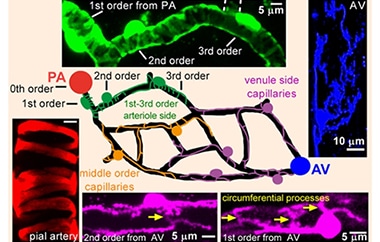Animal: A 16-year-old female dog.
Chief complaint: Mental depressed and appetite abolished for 4 days.
Physical examination: Partial teeth dropped, cataract, heart auscultation prompted mitral regurgitation (suggesting degenerative valvular disease).
Blood routine/chemical examination: Normal.
Imaging examination: Ultrasound showed fluid dark areas and cysts in the uterus and chronic cholecystitis with gravel-like stones.
Chronic cholecystitis, gallstones, and pyometra.
A surgery for pyometra was performed, in which bilateral uterine ovaries were removed, and postoperative recovery was steady.
This operation is a routine operation, so no more details here. Let ’s focus on the anesthesia.
- NEXT-Anesthesia procedures
1. Preoperative medication: Heparin sodium 450IU deep s.c.
2. Pre-induction medication: Dexamethasone 2mg
3. Induced medication: Midazolam 2mg i.v., Propofol 18mg i.v.
4. Tracheal intubation: No spontaneous breathing. The dog was intubated in the supine position and the cuff was fixed 3cm under the glottis. Ventilated manually, symmetrical breath sounds of both lungs were auscultated while peak airway pressure reached 12cmH2O when the breath was full.
5. Inhalation anesthesia: 2%isoflurane
6. Mechanical ventilation: Respiratory (R):16bpm. Fresh gas flow (FGF):0.3L/min. Inspiration and expiration ratio (I/E):1:1.5. Peak airway pressure (Paw):12cmH2O.
7. During operation: Heart rhyme: regular; Oxygen saturation (SpO2):98%; Pulse(P):98bpm; Blood pressure (BP):100/60-110/50. Calcium gluconate 10mL + 0.9% NaCl 200mL, i.v.gtt. in 40 minutes.
8. After the operation: Isoflurane inhalation stopped when suturing the skin, resumed spontaneous breathing after 5 minutes of surgery closure, and extubated after 8 minutes. No adverse reactions.
As a matter of fact, the operation is not so complicated that the clinical veterinarians can master it, but the comprehension of anesthesia procedures is harder. Next, through a few questions, let’s interpret the main points of anesthesia together.
Q1. Why use mechanical ventilation instead of spontaneous breathing?
Among elderly dogs, respiratory muscle fatigue is more likely to occur due to muscle degeneration, and respiratory drive can’t be adequate, resulting in a reduction of effective ventilatory volume, which may eventually lead to respiratory failure.
Q2. Why should the I/E be set to 1: 1.5?
Elderly dogs have reduced lung compliance, while the prolonged inspiratory phase is beneficial in ensuring adequate ventilation time and maintaining gas exchange in the lungs. In addition, considering that elderly dogs are more likely to produce airway secretions, leading to blockage of alveoli and capillary bronchiole, we prolong the inspiratory phase to make the alveoli fully dilatated.
Q3. Why calcium injected during surgery?
Anesthetic drugs inhibit calcium ion exchange and sensitivity in the sarcoplasmic reticulum, resulting in weakened cardiac contractility. Moreover, the dog suffers from valvular disease is subject to insufficient cardiac output. Therefore, a calcium supplement is needed to maintain cardiac contractility and adequate cardiac output.
Q4. What is the application of dexamethasone in this case?
In elderly dogs, we use dexamethasone to increase pulmonary surfactant, reduce lung surface tension, make alveoli easier to dilate, increase lung compliance, and improve ventilation. Besides, Pre-induction administration can effectively reduce the incidence of postoperative vomiting.
Q5. Why heparin used before surgery?
Because the owner disagreed with the examination of blood coagulation and ultrasonic cardiogram due to economic factors. However, the elderly dog with valvular disease is prone to suffer from thrombosis, so we applied anticoagulant therapy by injecting heparin sodium to prevent thrombosis and embolism during and after surgery.
Chemical restraint, simply numbing the animal, is definitely not anesthesia. A good anesthesiologist must consider every situation ahead and prevent them in advance, which is where the professional value lies.



